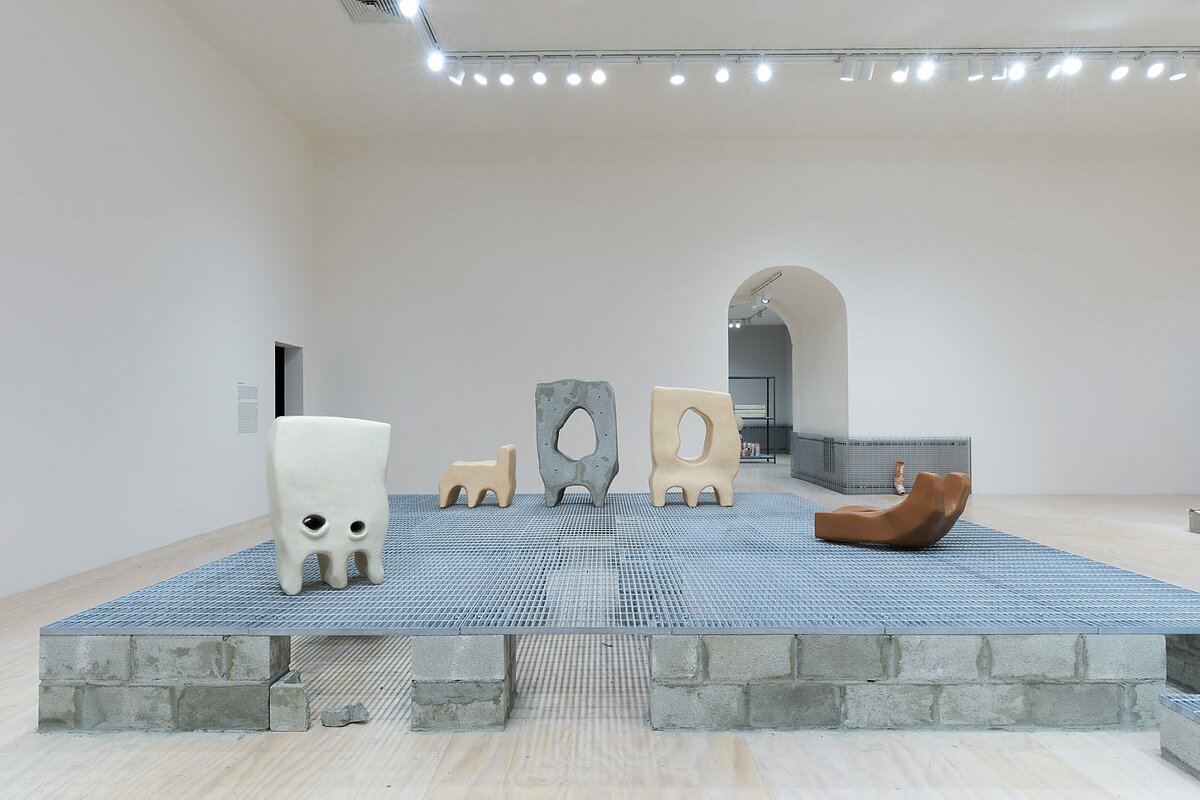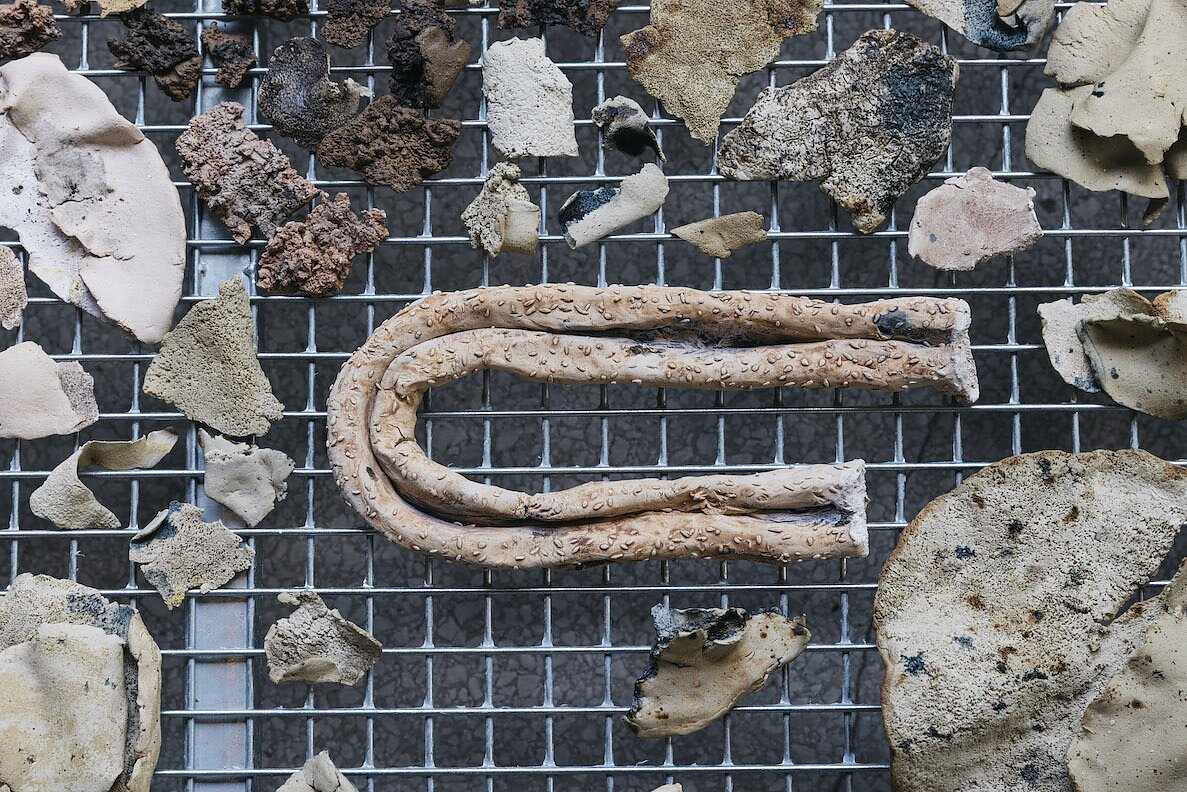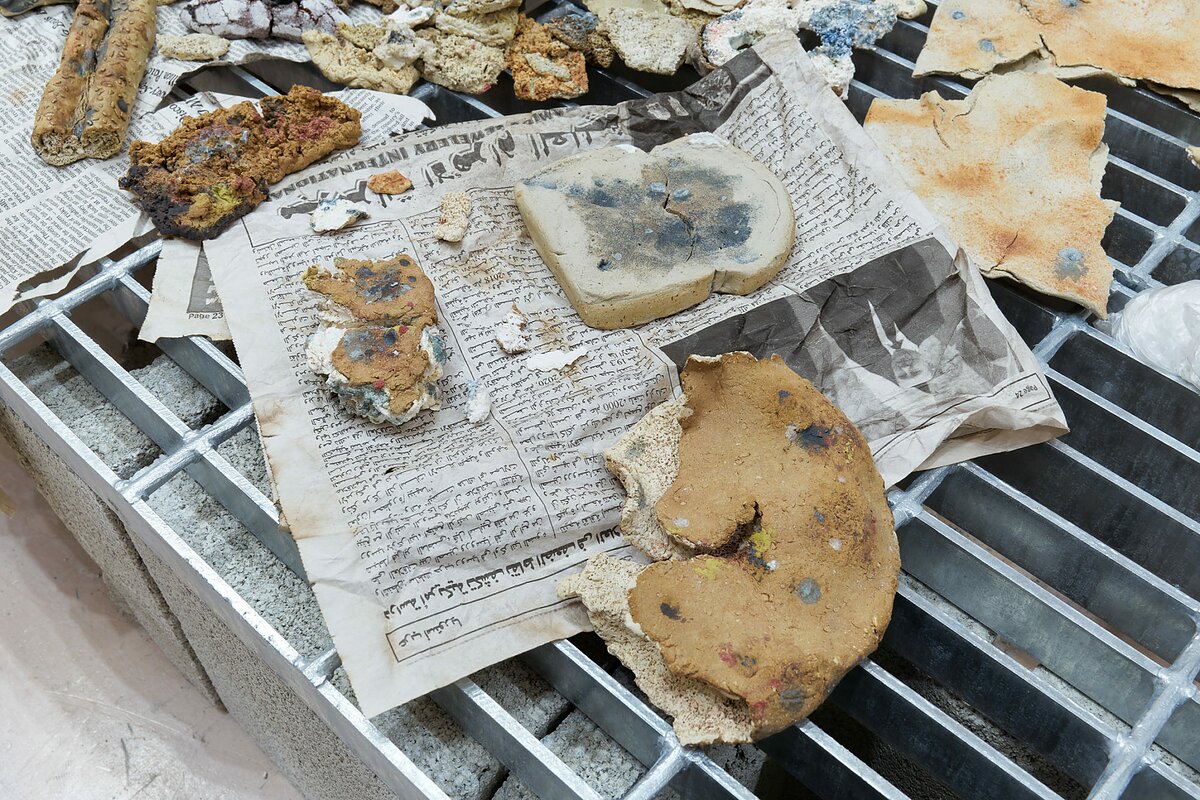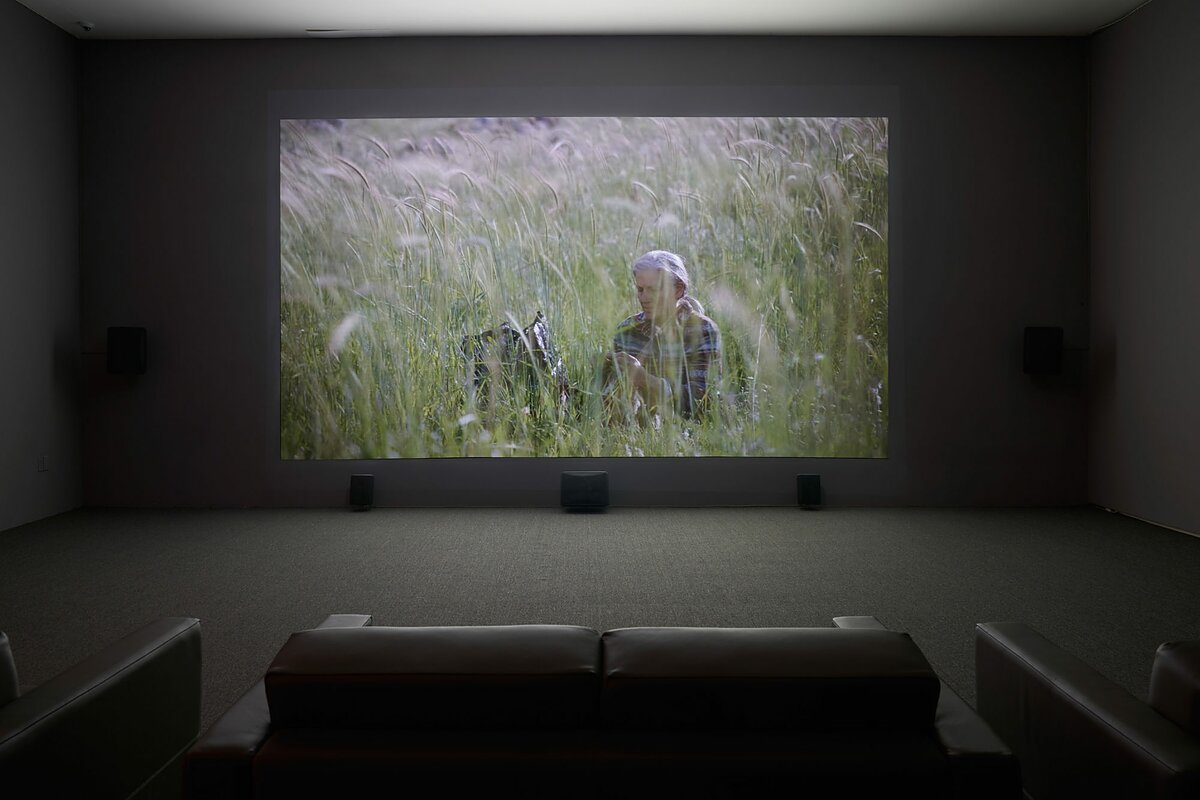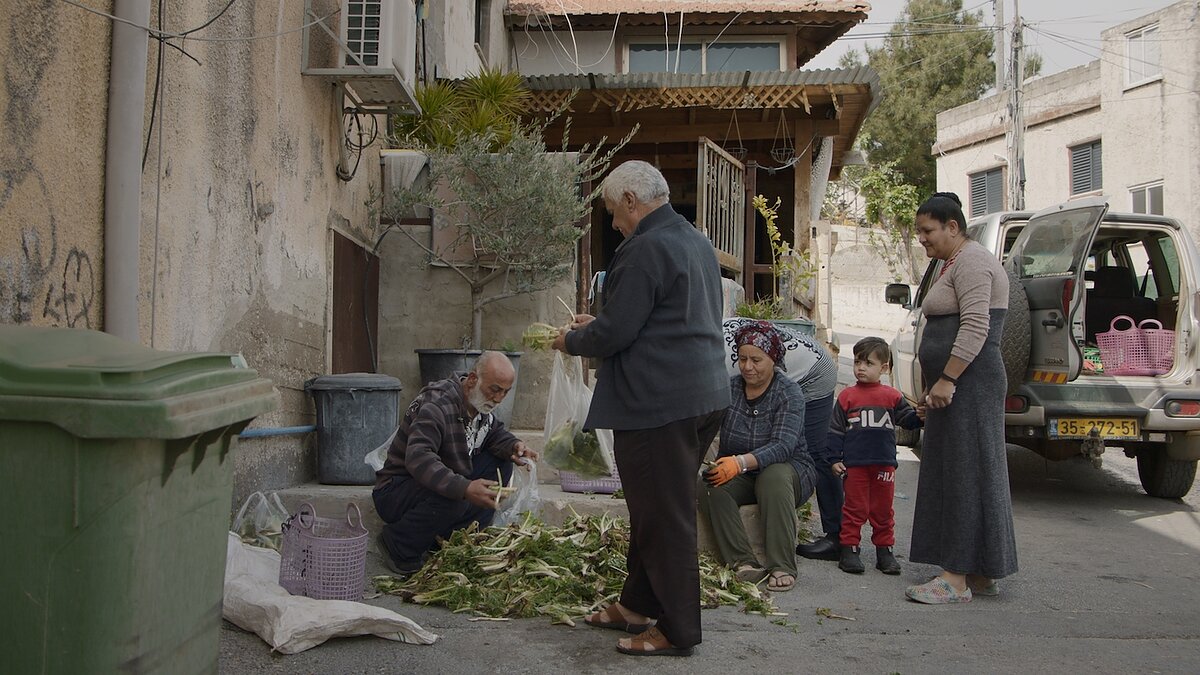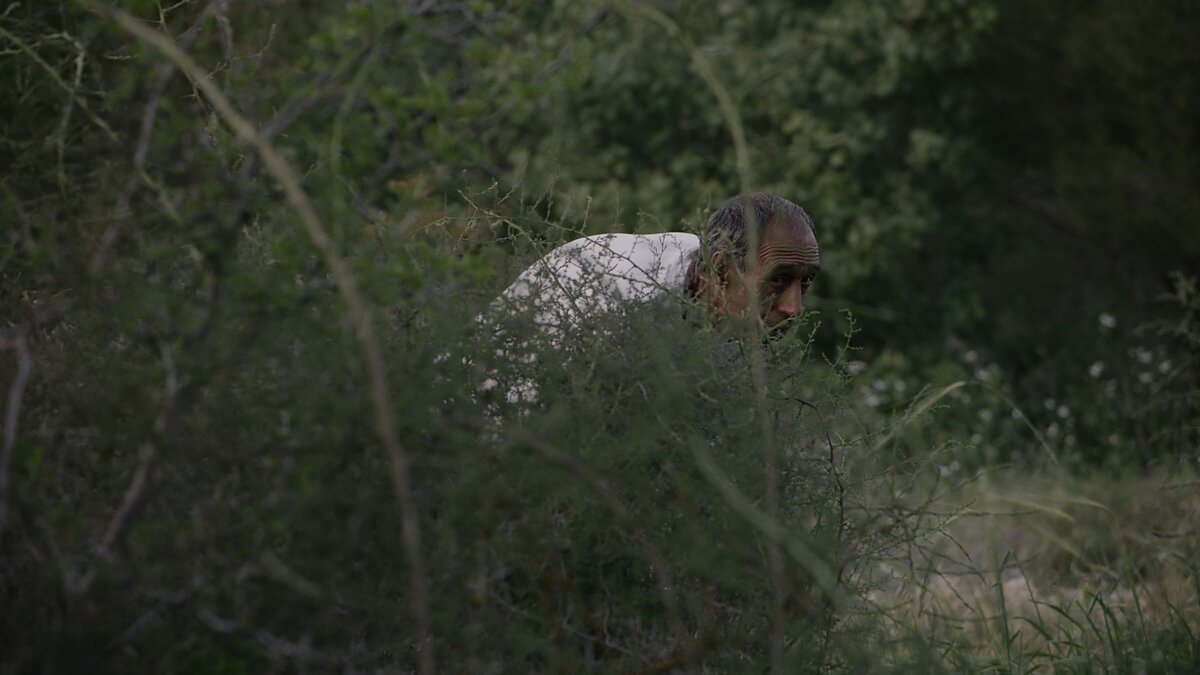Jumana Manna Excavates History, Ecology, and Culture in Palestine
History is not unlike an interior, gnarly in its formation with a finding awaiting behind every corner. And, most importantly, like an edifice, the past is marked with cracks and holes filled with phantom bindings, of concrete, or memories.
Jumana Manna’s exhibition, “Break, Take, Erase, Tally,” at MoMA PS1 summons the architectural body’s relationship with history. The Palestinian artist’s first major institutional show in the U.S. opens with a serene, inviting installation, ceramic and concrete sculptures perched over galvanized metal grids that run across the museum’s third floor gallery. The cage-like structures sit on blocks of concrete or lean against the walls, spreading over the space like a sneaky serpent or a lingering memory. Titled Cache (2018 - ongoing), Manna’s series of abstract ceramic sculptures possess allusively corporal accents. Painted in various hues of muted tones, they replicate the shapes of bygone grain storage vessels from the greater Levant region which today spans Eastern Mediterranean and Western Asia.
A stroll around the display reveals the objects’ eye-like gapings and asymmetric corners bent akin to elbows. Similar to fragments of remembrance, the hollowed forms are familiar yet foreign—they’re also industrial despite their soft appearances. Juxtaposed with the rusty grids of their metal plinths, the suite of sculptures broaden the semantic of storage from function to collective recollection. Manna’s work dissects agricultural architecture’s legacy for earth, both as a living source of vegetation and life and as a land of inhabitance and cultural identity. In her gentle handling of materials, she also complicates the power of the hand as a tool that controls, tends, and crops the earth.
Viewers are free to choose their own journey through the works thanks to the exhibition’s open orchestration, which recalls the feeling of traversing a secret garden that brims with mysterious blossoms. Here, in lieu of a spring flower, a medley of ceramic sculptures over newspaper sheets may intrigue one to bend and discover. Titled Old Bread International (2022), the display pays homage to makeshift lunch tables anchored by the sharing of a bread in Eastern Mediterranean and North African cultures. The feasts’ absence of eaters is not wholly unnatural as Manna’s display references the tradition of leaving leftover bread for others to enjoy.
An invitation for nourishment, the tradition is a practice of shared nutritive care, embodied here also as a monument of bodily co-existence. Sacredness of bread—not only as the baked leavened dough but earned and cooked food in general—stretches over the region where the tradition of kissing old bread out of respect before throwing it away is not uncommon. Manna’s materialization of sustenance in the installation is ghostly and mysterious, with layers of pita and crumbled Jerusalem bread—all rendered in the firmness of ceramic—blended with industrial debris familiar from architectural collapses. Through this bridging of comfort and dismay, the Berlin-based artist unveils history’s politicized relationship with farming, foraging, and cooking, dominated by colonialist strategies.
Manna’s paralleling of people and plants indigenous to a land is woven with poetic precision across the show which is bookended by two videos, Foragers (2022) and Wild Relatives (2018) on both sides of the installation.
In Foragers, Manna chronicles an ongoing strife between Palestinian foragers and the Israeli Nature Protection Authority over the collection of akkoub and za’atar herbs. Essential culinary ingredients in the Palestinian cuisine, these herbs are deemed in danger of extinction by the Israeli authorities who impose legal charges on foragers. These plants manifest the complexity of the broader power struggle between the controlled and the controller as well as the politicized stigmatization of generational culinary heritage and bodily cravings.
Water Arms (from Manna’s Cache series) (2019) indeed best materializes the systemized dehumanization and the imposition of the political onto the body. Guttural, the cylindrical group of galvanized metal, ceramic, and lime bent forms resemble chopped limbs, ventilation ducts, or the excavated possessions of an ancient civilization. Between fleshy and industrial, they hint at fluid exchange in practicality, yet beyond the visible, they promise a silent resistance in their eerie ambiguity and refusal of an immediate attribution. With their hollow ends facing different directions, Manna’s forms are watchful, their neatly bent necks encapsulating the defiant body’s rigid malleability.
Osman Can Yerebakan is an art and culture writer and curator based in New York.
